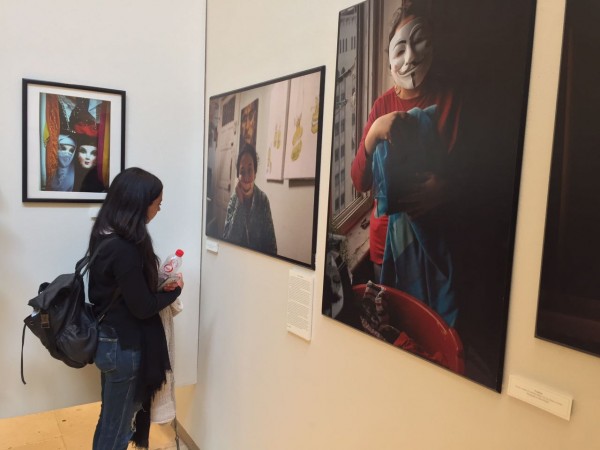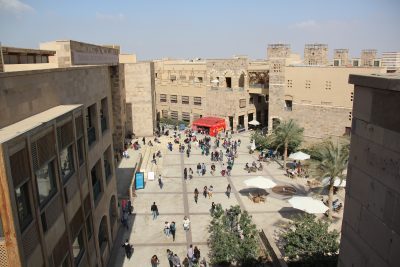The Patriarchy in the Lives of Women, through the Lenses of Women

@MennaEid
The 15 Women Photographers Exhibition bores through the restraints imposed by patriarchal societies.
From black and white, to abstract, to travel, the photographs on display at the Abdul Latif Jameel Hall, a showroom smaller than most AUC classrooms were not only beautiful, but each piece told a deep story about its content and creator.
Construction Engineering Senior Mostafa Khaled, expressed his surprise upon seeing how successful the photographs were in conveying the society we live in today.
The work of photographer Randa Shaath, adjunct faculty at the journalism department, specifically stood out to Khaled.
In particular was a photograph of a woman after surgery, with a cannula attached to her hand and a lit cigarette in the other.
“It seems to me that she is trying to be happy through the simple things in life. It shows spectators that they do not need to be billionaires to be happy. The simple things in life can please you,” he said.
Shaath acknowledged that out of her displayed collection, this photograph stood out the most to viewers.
“The irony is shocking, you know… That somebody is smoking a cigarette inside a hospital,” she said.
![The image of the woman smoking a cigarette in the hospital [far left] uses irony to shock the audience [Menna Eid]](http://www.auccaravan.com/wp-content/uploads/2017/02/Unknown-3-e1487967844850.jpeg)
For 20 years, Shaath was unable to work on a photography project due to time constraints imposed on her by her job as a newspaper photo-editor and a photography coach.
She later came to realize that the intimate and personal pictures she took of her family and friends on a daily basis held a deeper meaning than photographs of any other project.
“They show relationships, intimacy, and feelings. Even if it was my family and friends, one could tell [through these images] more about the society. So I started taking more pictures of them consciously,” she said.
![A striking photograph - this conveys the toxic nature of gender roles in modern society [Menna Eid]](http://www.auccaravan.com/wp-content/uploads/2017/02/Unknown-2-e1487967548574.jpeg)
Every photographer, like Heba Khalifa and Ola Seif, depicted personalized versions of what reality and society are to them through reflecting upon their life experiences as women.
Graduate student Jehad Ibrahim thought that the diversity of the displayed photographs was exciting.
“Every photographer had her separate signature. You can relate to some, to all, or to none. And that is what I love,” said Ibrahim.
Ibrahim, who is a photography enthusiast as well, believed the photographs were empowering and inspiring, especially because they were taken by women.
She believed it was important to see women go out, take pictures, present them to people, and, most importantly, encourage and empower others to be brave and do what they desire.
“I sometimes fear going out with my camera, and this is a problem specifically in Egypt.
The freedom of being able to do what you love and being able to publish it to the world is very inspiring, but being a woman makes it very hard to do that here,” she said.
For an exhibition featuring the inspiring artwork of women who have truly excelled in their careers, to be presented in an underrated and unappreciative manner was perhaps the most disappointing aspect of all.




